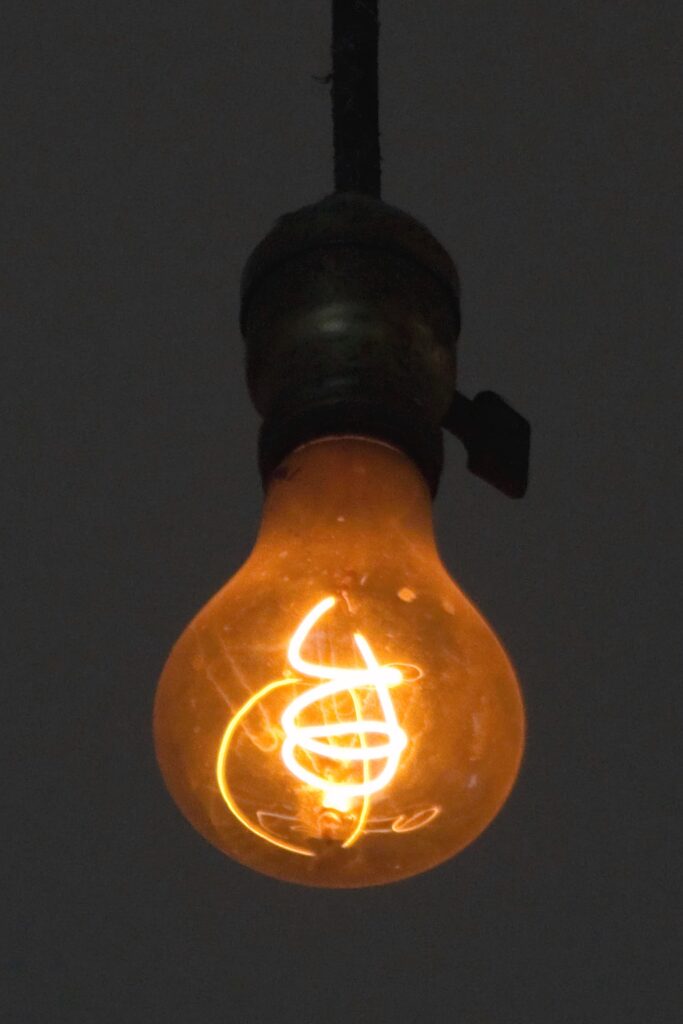The Centennial Bulbs’ Legendary Endurance
Happenings in 1901
- Prince Edward became King Edward VII following the death of Queen Victoria.
- Booker T. Washington, a former slave and prominent educator, controversially dines with President Theodore Roosevelt at the White House, sparking criticism for breaking racial norms.
- Italian physicist and inventor Guglielmo Marconi broadcasted the first transatlantic radio signal.
- Yosano Akiko published Midaregami, a poetry collection that boldly explored themes of love and sensuality, challenging societal norms and influencing modern Japanese poetry.

Back in 1901, in the heart of Livermore, California, USA, something rather ordinary happened. A light bulb found its home at the local volunteer firehouse. It was a simple, everyday act, and no one could have possibly foreseen that this unassuming bulb would embark on a remarkable journey, spanning seven generations of Americans and still be shining bright today. This charming hand-blown relic, with its carbon-filament enchantment, has been radiating warmth and nostalgia since its very inception.
The captivating tale of the Centennial Bulb began when the ingenious French inventor, Adolphe Chaillet1, patented the concept. This extraordinary carbon-filament light bulb manages to produce as much light as a modest 4-watt bulb2, and yet, it has outlasted all of its contemporaries. It’s been through a few moves and even endured brief moments of darkness during past power outages, but against all odds, it continues to light up our lives. What’s the secret behind its astonishing longevity?
A significant part of the bulb’s enduring charm lies in its craftsmanship. Painstakingly hand-blown with precision at the Shelby Electric Company in Shelby3, Ohio, during the late 1890s, the Centennial Bulb was not just another mass-produced bulb. It was meticulously designed and assembled, setting it on a path to become a true heirloom. Another key to its remarkable resilience is the unwavering dedication of the Livermore-Pleasanton Fire Department in California, who recognized its extraordinary longevity back in the 1970s. The Centennial Bulb has been pampered with the utmost care and attention, even boasting its very own dedicated power supply and a controlled environment to minimize stress on its delicate filament.
Now, speaking of light bulbs, have you ever wondered why we don’t still use bulbs like the Centennial Bulb today? There are a couple of reasons worth noting:
- Inefficiencies: Traditional incandescent bulbs4 like the Centennial Bulb dissipate a whopping 90% of their energy as heat rather than light. Additionally, advancements in lighting technology have given rise to more energy-efficient options, rendering the Centennial Bulb’s carbon filament technology somewhat obsolete.
- Planned Obsolescence by the Phoebus Cartel: The Phoebus cartel5 operated between 1925 and 1939. The cartel, comprised of manufacturers, intentionally designed bulbs with a limited lifespan, encouraging consumers to replace them more frequently aka Planned Obsolescence. While this practice boosted profits, it also led to a surge in electronic waste. However, it is worth noting that UK government regulators and some independent engineers have argued that there are legitimate engineering reasons to reduce the lifespan of a light bulb, but it’s a topic that continues to spark debate.
So, how does the world celebrate the Centennial Bulb’s extraordinary longevity? Well, it’s a star in its own right. Every year, people from far and wide gather around their screens to watch the Centennial Bulb webcam and witness this living piece of history radiating its steady glow. It’s a testament to the enduring fascination with this remarkable bulb. The Centennial Bulb has also enjoyed its moments in the spotlight, making appearances on TV shows and documentaries, sharing its unique story with the world. And let’s not forget the festive parties held in its honor, complete with cake, music, and, of course, a heartfelt toast to this luminous centenarian.
On a personal note, connected to electric history, my uncle’s family home holds a unique place in their quaint, rural Ohio town as the very first residence to be connected to their local electric grid. I can’t help but wonder if they ever had a bulb akin to the Centennial Bulb lighting up their home back in the day.
TL;DR: Back in 1901, Livermore snagged a light bulb. It's still lit today, like seven generations later! This OG Centennial Bulb, with its carbon-filament swag, won't retire. Crafted with mad skills in Ohio, it's the GOAT of bulbs, outshining all. New bulbs are more energy-efficient, and there's this sketchy Phoebus Cartel saga, but let's hype the bulb that's unkillable! It's a webcam celeb, a TV sensation, and throws lit parties. Oh, and my uncle's crib was one of the first electric hotspot in Ohio, so they prolly had a Centennial Bulb vibe too! 💡🔥🎉
Learn More
- Livermore’s Centennial Light Bulb www.centennialbulb.org/
- Lest We Forget, a Short History of Housing in the United States by James Lutz www.aceee.org/files/proceedings/2004/data/papers/SS04_Panel1_Paper17.pdf
Sources
- “Adolphe Alexandre Chaillet.” Wikipedia, 18 July 2023, en.wikipedia.org/wiki/Adolphe_Alexandre_Chaillet. Accessed 27 Nov. 2023. ↩︎
- “Centennial Light.” Wikipedia, 16 July 2023, en.wikipedia.org/wiki/Centennial_Light#:~:text=The%20Centennial%20Light%20is%20the,the%20Livermore%2DPleasanton%20Fire%20Department. Accessed 27 Nov. 2023. ↩︎
- Shelby Ohio Museum.” www.centennialbulb.org, www.centennialbulb.org/shelby-museum.htm. Accessed 27 Nov. 2023. ↩︎
- “Incandescent Lamp | Definition, Inventor, Types, Examples, & Facts | Britannica.” Www.britannica.com, www.britannica.com/technology/incandescent-lamp#ref1061303. ↩︎
- “Phoebus Cartel.” Wikipedia, 31 Oct. 2023, en.wikipedia.org/wiki/Phoebus_cartel#:~:text=Although%20the%20group%20had%20intended. Accessed 28 Nov. 2023. ↩︎




